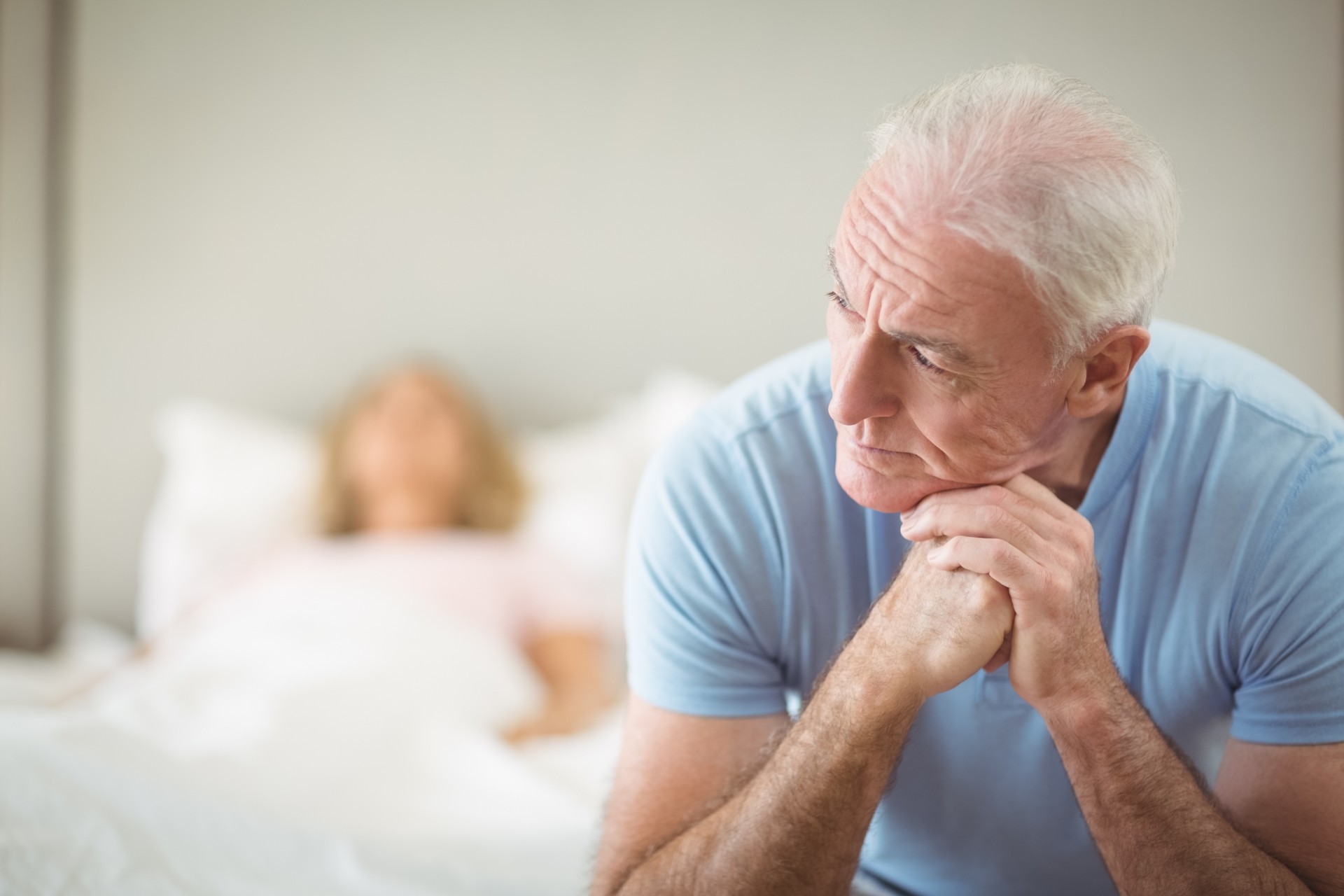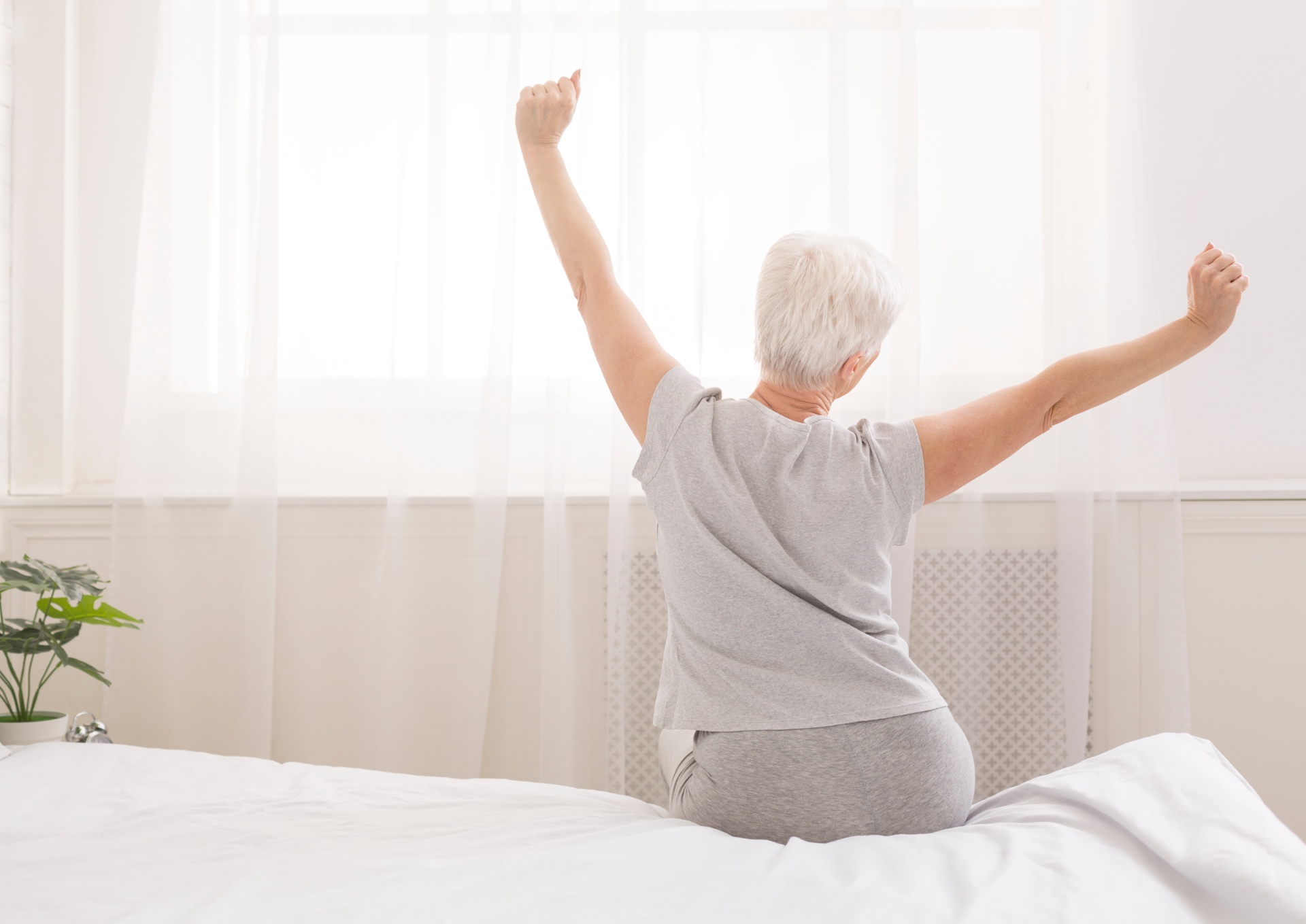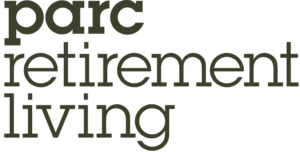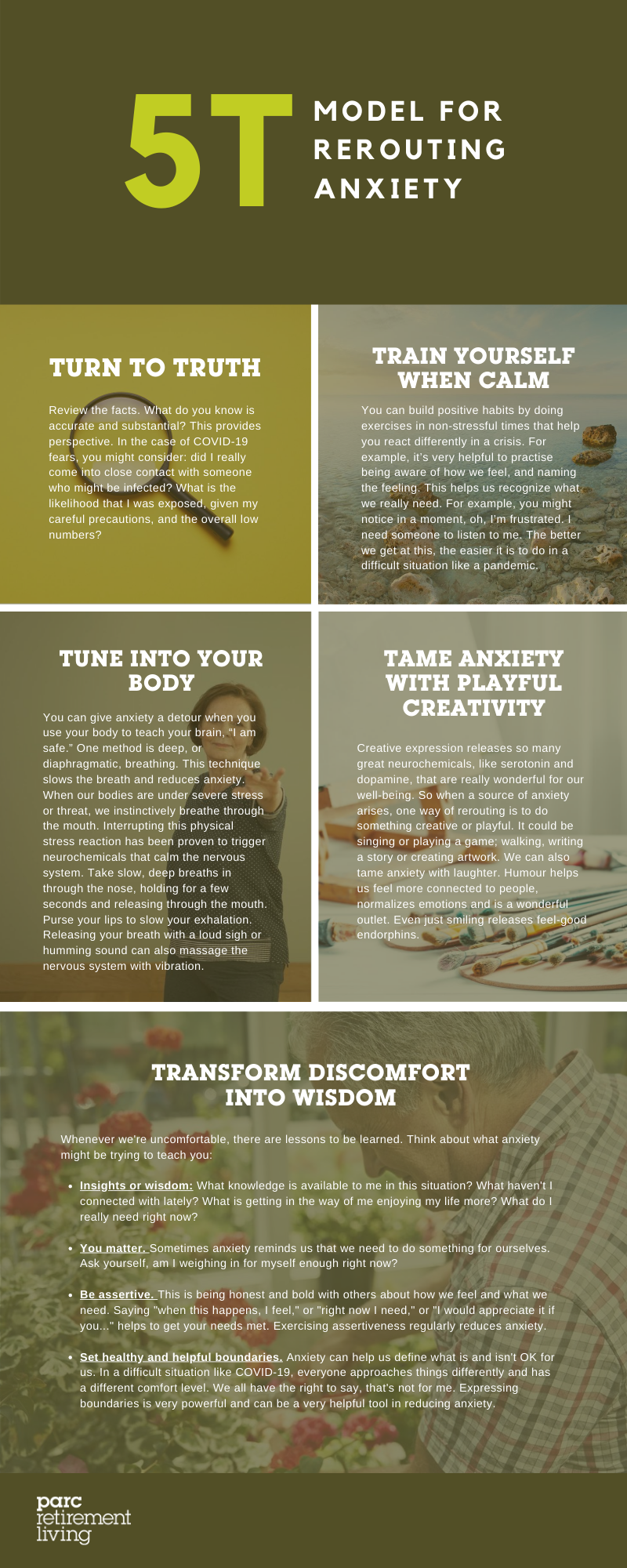Rerouting Anxiety During COVID-19 and Beyond
in COVID - 19 NewsWritten by PARC Retirement Living

Anxiety. We’ve all experienced it, but it can still be difficult to describe. Feelings of tension and worry. Sleeplessness and jitters. A racing heart. None of it is very pleasant.
But believe it or not, anxiety isn’t necessarily a bad thing. It’s a healthy and normal response to stressful situations. In nature, anxiety prepares us to confront or flee potential threats to our safety. However, in the modern world, the same reaction – its duration and severity – can be destructive, especially when out of proportion to the cause.
The COVID-19 pandemic has brought along with it all kinds of anxiety triggers: greater isolation and limited family time, fear of virus symptoms, uncertainty about the future and more. So how do we cope?
As part of our PARC Retirement Living virtual speaker series, Registered Clinical Counsellor Deborah Braun joined us to present a webinar called “Rerouting Anxiety: It’s Never as Bad as It Seems.” For more than 15 years, Deborah has been helping her clients “chart a path towards a more desirable future,” integrating traditional therapies with leading-edge neuro-psychology exercises.
She walked us through some helpful tips and tools to recognize and manage anxiety. Below, she expands on her presentation with more information and strategies to defuse anxiety, whether caused by the pandemic or other life challenges.

Q&A with Deborah Braun
Q: First of all, how can we identify anxiety? What are some of the behaviours and symptoms?
A: Well, they show up differently for everybody. Physical symptoms can include a racing heart or trouble sleeping. You can get hot or cold. Sometimes there is intestinal discomfort. And then there are mental behaviours like worrying, ruminating, questioning oneself and feeling unsettled or restless. Some people become short-tempered and impatient. Others talk a lot. So there’s quite a range.
Q: In your presentation, you mentioned that we need to embrace anxiety, similar to how we need to face fears and other difficult emotions. How does that work?
A: In my presentation, I included a quote by author and clinical psychiatry professor Dr. Dan Siegel: “To tame it, name it.” The only way to work through your emotions is to name and acknowledge them. To experience them. A lot of recent research has also focused on getting in touch with our bodies; allowing ourselves to be present and physically feel the experience. Anxiety is focusing on the past and future, versus now. When you face your anxiety, you ask yourself, “Are these feelings really based on what is happening right now, right here?
Q: It sounds simple – why do so many people have a hard time with this?
A: Our tendency when things get tough is to distract or numb ourselves. But if we can meet ourselves with gentle curiosity instead, and make a little room for our feelings, anxiety shifts away more quickly. The metaphor I like to use with any kind of difficult emotion is a child waking up after a nightmare and calling for you. You don’t stay in your bed and wish he would be quiet. You go to his bedside to comfort him and you say, “Gee, well, if I had a dream like that, I would be scared, too.” You let him talk about his feelings. We should treat ourselves with the same consideration when we feel anxiety. Interrogate the feeling honestly and gently by asking ourselves, “What is this about, really?”
Q: In your talk, you provided a great “5Ts” model for rerouting anxiety. Could you go over that? How could somebody apply this to COVID-19?
A: Absolutely. To reroute back to a sense of safety, you can use any or all of these tools:
Q: I guess everybody is different when it comes to which tools suit them best?
A: Exactly. I know for myself, the physical stuff works best; breathing, stretching, exercise. For example, I practise this set of mindful movements when I feel anxious: Stand with your feet together and arms out to your sides. Slowly lift them above your head and back down. If you do this several times during a period of anxiety, it regulates your nervous system and releases cortisol from the body.

Q: In your most recent talk, and in the previous one, “Light Your Pathways,” about resilience, you mentioned the importance of self-compassion. What does this look like?
A: Self-compassion means being kinder to yourself when you’re struggling, and silencing your inner self-critic. Often when we struggle, we make things worse by being impatient and angry with ourselves. Dr. Rick Hanson refers to this as “the second dart” – the one we throw at ourselves after getting hit with the first dart – a difficult situation such as COVID-19 – making it even worse. People who can interrupt their negative inner monologue and treat themselves compassionately have better mental health, well-being, motivation and coping skills. Self-compassion expert Dr. Kristin Neff has created some great active self-compassion exercises, like the following meditation called “Soften, Soothe, Allow”:
- Take breaths in through your nose and out through your mouth.
- Allow yourself to realize where you are. Notice the temperature of the room and the sounds around you.
- Put both hands on your chest to feel the rise and fall as you breathe. Be present. Notice you are being here and taking time for yourself. That is compassion.
- Bring some recent anxiety to mind. Remember the people who were there and the emotions you felt. Do you feel yourself getting tense? Say to yourself, “soften.”
- Rub your neck with your hand and say “soothe.”
- Open your body stance and say “allow.”
Q: At what point should someone seek professional help with anxiety?
A: When people are having an almost impossible time sleeping, or finding themselves so distracted they’re unable to switch gears or get out to do something, and it’s really impacting their engagement in life. Those are typically signs of a bigger problem. Or, if you’re finding that you’re talking about the same thing over and over again with people and they’re telling you, “This seems like it has become a big deal for you,” then you know. Those are signs you might want to talk to your GP.
This information is not intended as medical advice, and should not replace a one-on-one relationship with a qualified healthcare professional.
For more great YouTube sessions on self-improvement and growth, visit PARC’s Virtual Wellness Webinar Series – Pathways Back Toward Calm on our channel. Or, visit our blog for more helpful tips and coping strategies.
- Light Your Pathways – Deborah Braun, M.A., RCC
- Extend the Light – Dr. Gloria McArter, Ph.D., RCC
- Reroute Anxiety – Deborah Braun, M.A., RCC
- Make Friends with Anger – Dale Trimble, M.A., RCC
- Relieve Relationship Distress – Jo-Anne Weiler, M.A., RCC


